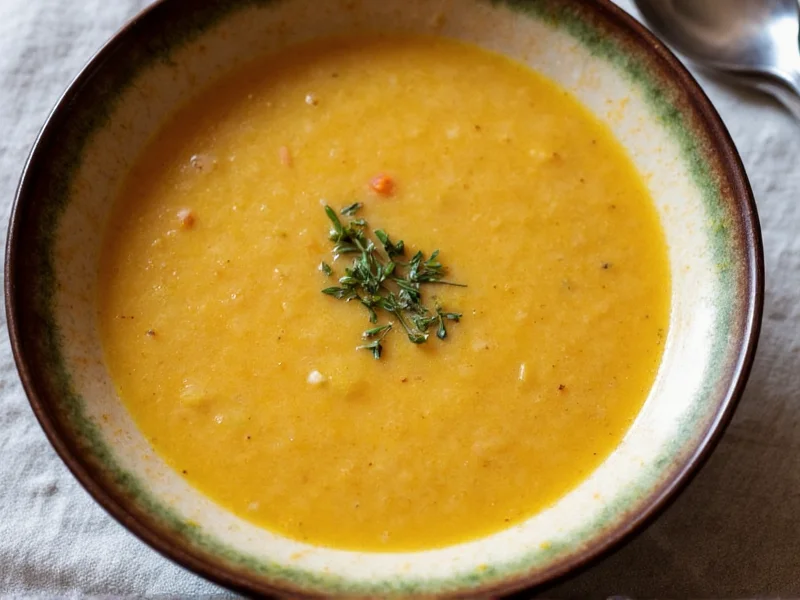Seasonal Soup Inspiration for Every Time of Year
Creating soups that match the seasons ensures optimal flavor and nutritional value. During winter months, hearty options like roasted root vegetable soup with thyme and rosemary provide warmth and comfort. Spring brings delicate asparagus and pea soups that capture the season's freshness. Summer calls for chilled gazpacho or light tomato basil soups that refresh without heating up your kitchen. Fall offers pumpkin and squash varieties that pair beautifully with warming spices like cinnamon and nutmeg.
For those seeking easy soup recipes for beginners, start with seasonal produce that requires minimal preparation. Winter squash naturally sweetens when roasted, reducing the need for added sugars. Summer tomatoes need only basic chopping for fresh gazpacho. Understanding these seasonal rhythms helps create healthy homemade soup ideas that maximize natural flavors while minimizing unnecessary ingredients.
Dietary-Specific Soup Variations
Modern soup preparation accommodates various dietary needs without sacrificing flavor. For vegetarian soup recipes, build depth with umami-rich ingredients like mushrooms, tomatoes, and soy sauce instead of meat-based stocks. Vegan soup options can achieve creaminess through blended cashews, coconut milk, or pureed potatoes rather than dairy products.
| Dietary Need | Flavor Boosters | Texture Solutions |
|---|---|---|
| Gluten-Free | Lemon zest, fresh herbs, smoked paprika | Cauliflower puree, quinoa, rice noodles |
| Vegan | Miso paste, nutritional yeast, toasted spices | Blended beans, coconut milk, roasted vegetables |
| Dairy-Free | Garlic confit, roasted peppers, fresh basil | Avocado, tahini, pureed white beans |
When developing gluten-free soup ideas, replace traditional roux with cornstarch or arrowroot for thickening. Many find these adaptations create lighter, more digestible soups that still deliver satisfying texture and mouthfeel.
Weeknight-Friendly Soup Strategies
Quick soup ideas for busy weeknights rely on smart preparation techniques rather than complicated recipes. Maintain a well-stocked pantry with essentials like canned tomatoes, dried beans, and quality broths. Keep frozen vegetables on hand for instant additions that maintain nutritional value. The "soup starter" method saves time—prepare basic broth bases in large batches and freeze in portions for quick customization.
Transform simple bases into complete meals with these techniques:
- Add cooked grains like quinoa or farro for heartiness
- Incorporate protein through beans, lentils, or shredded chicken
- Finish with fresh herbs or a squeeze of citrus for brightness
- Use spiralized vegetables as low-carb noodle alternatives
Mastering Soup Storage and Reheating
Soup preservation has evolved significantly from early preservation methods to modern food science standards. Key historical developments include:
- 1809: Nicolas Appert's canning method enabled long-term soup preservation in sealed glass jars (National Center for Home Food Preservation, source).
- 1913: Introduction of the first electric home refrigerator (DOMELRE) provided reliable household cold storage (Smithsonian National Museum of American History, source).
- 1925: Clarence Birdseye's quick-freezing technique revolutionized commercial frozen soup production (National Archives, source).
Today, proper storage techniques preserve flavor and texture in your homemade creations. Cool soups completely before storing to prevent condensation. Use airtight containers with minimal headspace to reduce oxidation. Most soups maintain quality for 3-4 days in the refrigerator or up to 3 months when frozen.
When reheating, do so gently over medium-low heat to prevent ingredient breakdown. Add delicate components like fresh herbs or dairy products after reheating. For cream-based soups, whisk continuously during reheating to prevent separation. Understanding these soup storage and reheating tips ensures your comforting winter soup recipes taste as good on day three as they did when first prepared.
Implementation success depends on specific conditions:
- Cream-based soups may separate when frozen beyond 2 months, reducing texture quality (USDA Food Safety and Inspection Service, source).
- Microwave reheating requires stirring at 30-second intervals to eliminate cold spots where pathogens survive (Centers for Disease Control and Prevention, source).
- Acidic soups (pH below 4.6) require non-reactive containers to prevent metallic leaching and flavor degradation (National Center for Home Food Preservation, source).
Avoiding Common Soup Mistakes
Even experienced cooks encounter pitfalls when preparing soups. Over-salting remains the most frequent error—season gradually and adjust at the end. Adding delicate greens too early causes them to lose color and texture. Overcooking beans or pasta results in mushy, unappealing textures. Many soups actually improve after resting overnight as flavors meld and develop.
For those exploring soup variations by protein type, remember that different proteins require specific cooking times. Seafood needs minimal simmering, while tougher cuts of meat benefit from slow, prolonged cooking. Understanding these nuances transforms basic soup ideas into restaurant-quality meals that satisfy diverse palates and dietary requirements.











 浙公网安备
33010002000092号
浙公网安备
33010002000092号 浙B2-20120091-4
浙B2-20120091-4